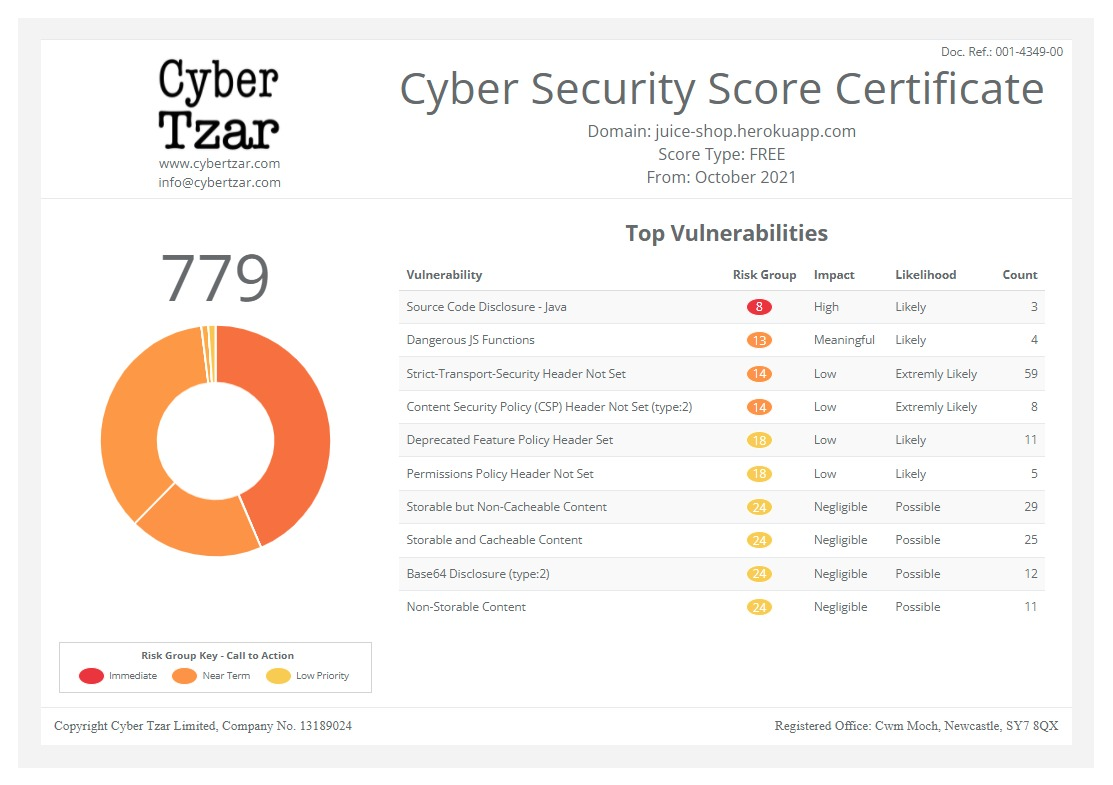Cyber Security News Aggregator
.Cyber Tzar
provide acyber security risk management
platform; including automated penetration tests and risk assesments culminating in a "cyber risk score" out of 1,000, just like a credit score.How to stay cybersecure whilst working remotely
published on 2025-01-20 13:44:12 UTC by WMCRCContent:

Remote and hybrid work have become the new normal for many companies around the world. While working from home (or anywhere) offers perks like flexibility and freedom, it also brings its own set of security risks. Hackers and cybercriminals are quick to exploit weak points in remote setups, putting sensitive company data and personal information at risk. This can not only cause a financial loss, but it can also lead to a business taking a knock to their reputation.
So, how do you stay safe when working outside the office? Whether you're a long-term remote worker or just starting your first remote role, this blog will guide you through the important steps to protect yourself, your devices, and your company’s data.
What are the risks of remote working?
Before we start telling you how to protect yourself when working remotely, let’s talk about what you’re actually protecting yourself from!
Unsecured networks: Working outside the office usually means using home Wi-Fi, public Wi-Fi, or hotspots. If these networks aren’t secured, hackers can intercept sensitive data.
Device theft: If your laptop, phone, or tablet is lost or stolen, unauthorised individuals could access work files.
Phishing attacks: Remote workers are prime targets for phishing emails, which trick people into giving up passwords or downloading malicious software.
Outdated software: Without regular updates, devices and software become vulnerable to malware and security breaches.
Mixing personal and work devices: Using the same devices for work and personal activities can expose company data to security threats.
Best practices for securing work devices
Securing your work devices is so important when working remotely. Here are some practical steps you can follow:
Use a VPN (Virtual Private Network)
A VPN encrypts your internet connection, ensuring your data stays safe even on unsecured networks. Most companies provide their employees with a VPN, but if not, consider using a reputable paid VPN service.
Enable firewalls and antivirus software
Firewalls act as barriers, blocking malicious activity on your network. Combine this with a trusted antivirus software to scan for threats regularly.
Secure logins Use strong, unique passwords for all accounts, and enable multi-factor authentication (MFA) wherever possible. Tools like password managers can help generate and store complex passwords safely, but the recommended method is to choose three random words and include numbers and special characters.
Avoid sharing devices
Don’t let family members or friends use your work laptop, as keeping work devices separate reduces the risk of accidental downloads or security breaches.
Use device encryption
Make sure that you enable encryption on your laptop or mobile device to ensure data is protected if it’s lost or stolen.
Why you should avoid public Wi-Fi
Public Wi-Fi might be convenient, but it’s also one of the biggest security risks for remote workers. Hackers can easily intercept data sent over unsecured networks, putting sensitive information at risk.
Why avoid public Wi-Fi:
Cybercriminals often create fake hotspots to trick users into connecting.
Data transmitted on public networks can be “eavesdropped” by anyone with the right tools.
What to do Instead:
Use your phone’s hotspot for internet access instead of public Wi-Fi. It’s more secure.
If you absolutely must use public Wi-Fi, ensure your VPN is active and never log in to sensitive accounts.
Avoid accessing financial accounts, company data, or sending sensitive information while connected to public networks.
Pro tip: If you’re working in a public place like a coffee shop, plug your laptop into a power socket, not a public USB data socket. Public USB ports can be used to install malware on your device — a tactic known as “juice jacking.” Using a data blocker when charging your phone or laptop adds another layer of protection.
The importance of regular software updates
It’s easy to ignore those software update notifications that pop up in the corner of your screen, but skipping updates can leave your devices exposed to security threats. Updates often include important security patches that fix known vulnerabilities.
Enable automatic updates: Make sure that your operating system, antivirus software, and all work-related apps are set to update automatically.
Update your devices: Don’t just update your work laptop — update your phone, tablet, and any other devices you use for work.
Beware of end-of-life software: If a programme or system is no longer supported by its developer, it won’t receive security updates, so always replace outdated software as soon as possible.
Need some support with your organisation’s cyber security? Contact us today to find out how we can help.
https://www.wmcrc.co.uk/post/how-to-stay-cybersecure-whilst-working-remotely
Published: 2025 01 20 13:44:12
Received: 2025 01 20 13:44:34
Feed: The Cyber Resilience Centre for the West Midlands
Source: National Cyber Resilience Centre Group
Category: News
Topic: Cyber Security
Views: 21
